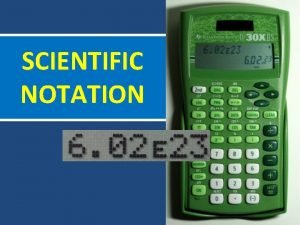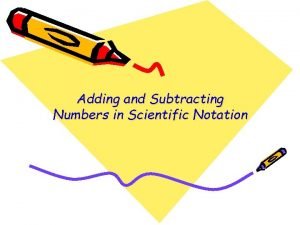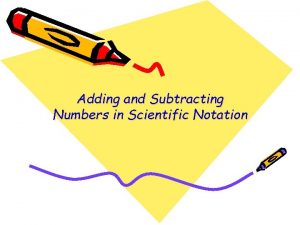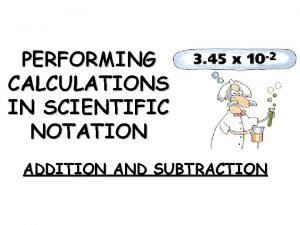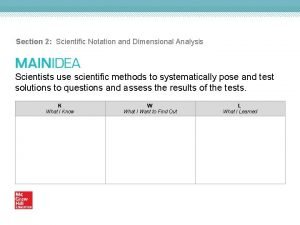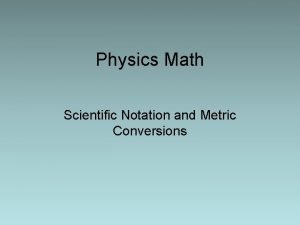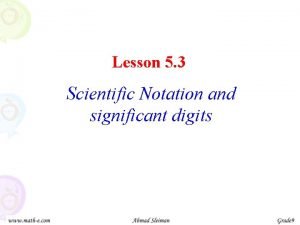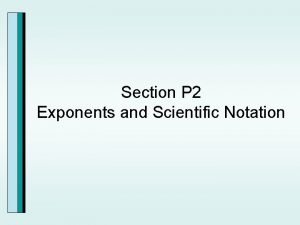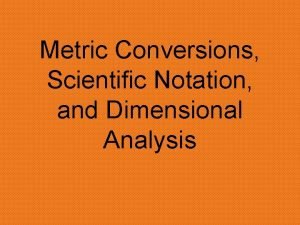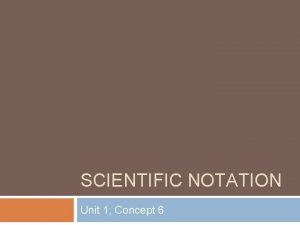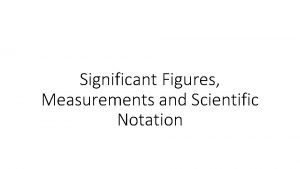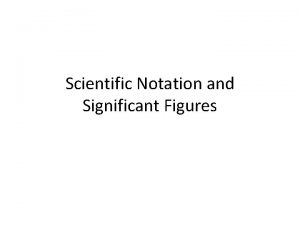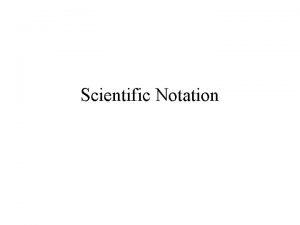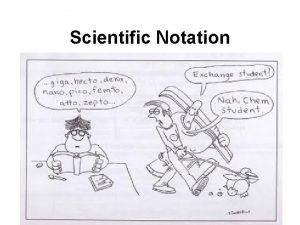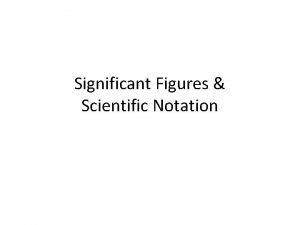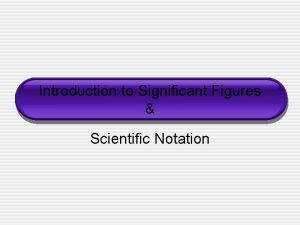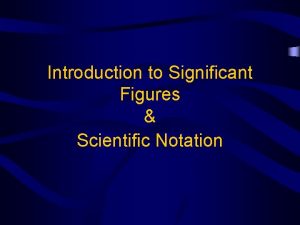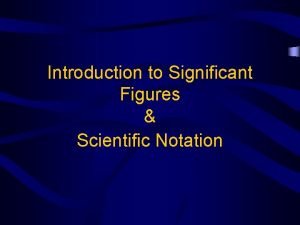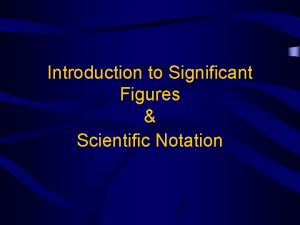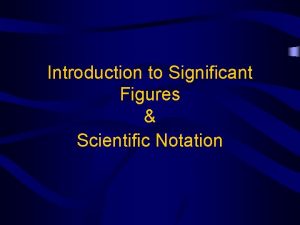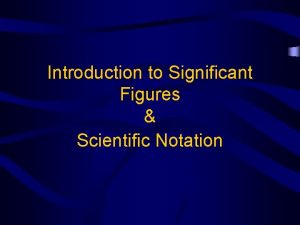Significant Figures and Scientific Notation Significant Figures All


















- Slides: 18

Significant Figures and Scientific Notation

Significant Figures § All measurements are inaccurate § Precision of measuring device § Human error § Faulty technique

Significant Figures § Measurements need to convey precision § Must include degree of uncertainty § Sig Figs tell us

Significant Figures

Significant Figures 1. Significant figures in a measurement include § § all of the digits that are known precisely plus one last digit that is estimated.

Significant Figures 2. Non-zero digits are always significant. 103. 230002

Significant Figures 3. All final zeros after the decimal point are significant. 12. 740 0. 0420

Significant Figures 4. Zeros between two other significant digits are always significant. 10. 0 2004 6. 000

Significant Figures 5. Zeros used only for spacing the decimal point are not significant. 100 0. 00000233

§ Always put a 0 in front of a decimal point § 0. 0042 §. 873 § 0. 247

Scientific notation § Some numbers are VERY big or VERY small. We use Sci. Note. To make them shorter. §

§ To put a number in Scientific notation, drag the decimal until there is only ONE non-zero number in front of it. § Add x 10 y to the end § The exponent y is determined by the number of times you moved the decimal and which direction.

§ If the decimal moves left, the exponent is positive. § If it moves right, it is negative. § Sci. Note. ONLY keeps the sig. fig. amount.

§ Examples: § 4000 will become 4 x 103 § 567. 3 will become 5. 673 x 102 § 0. 0000035 will become 3. 5 x 10 -6 § 0. 000780 will become 7. 80 x 10 -4

Significant Figures 6. If you add or subtract, the answer is rounded to the same number of decimal places as the measurement with the least number of decimal places.

Significant Figures 7. If you multiply or divide two numbers, the answer is rounded off to the number of significant figures in the least precise term used in the calculation (i. e. the number with the fewest sig figs).

Calculations

Calculations
 Scientific notation significant figures worksheet
Scientific notation significant figures worksheet Enginering notation
Enginering notation Circle the figures that are written in scientific notation
Circle the figures that are written in scientific notation What is a significant number
What is a significant number Polish notation and reverse polish notation
Polish notation and reverse polish notation Convert infix to prefix notation: (a+b)*c
Convert infix to prefix notation: (a+b)*c Copyright notation
Copyright notation Dividing using scientific notation
Dividing using scientific notation Adding scientific notation
Adding scientific notation Adding and subtracting scientific notation
Adding and subtracting scientific notation Scientific notation subtraction
Scientific notation subtraction Multiplying numbers in scientific notation worksheet
Multiplying numbers in scientific notation worksheet Dimensional analysis with scientific notation
Dimensional analysis with scientific notation Scientific notation and metric conversions
Scientific notation and metric conversions Operations and scientific notation lesson 5
Operations and scientific notation lesson 5 Section p.2 exponents and scientific notation
Section p.2 exponents and scientific notation Metric conversions scientific notation
Metric conversions scientific notation Adding and subtracting scientific notation
Adding and subtracting scientific notation Scientific notation worksheet doc
Scientific notation worksheet doc


